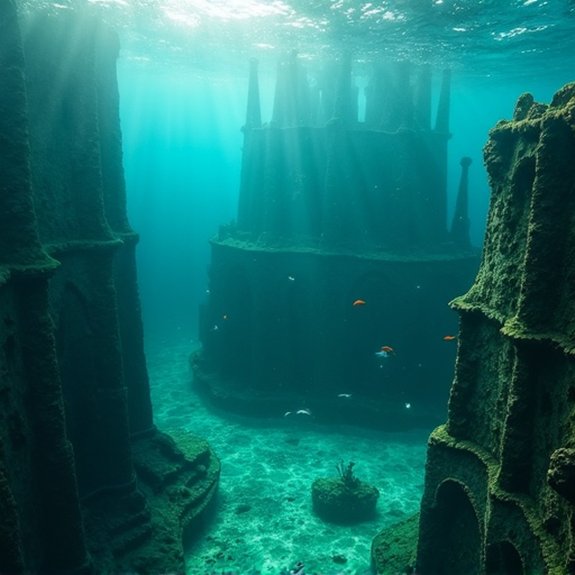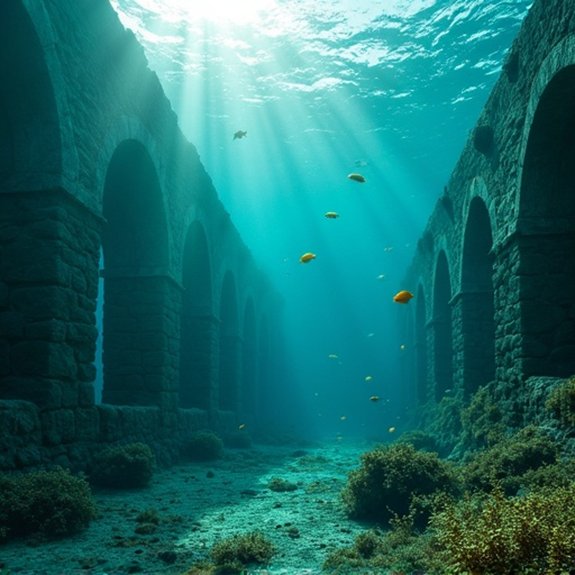The Legend of Lyonesse Under the Waves
Between Cornwall and the Isles of Scilly, something extraordinary vanished beneath the Atlantic’s depths. Medieval chroniclers documented a catastrophic event that swallowed an entire kingdom in a single night. They called it Lyonesse. Fishermen still report hearing phantom church bells during storms, while local maps mark treacherous reefs with names like “City” and “Court.” What really happened to this lost dominion, and why do its stories persist across centuries?
Introduction

When medieval chroniclers first penned tales of a lost kingdom beneath the waves, they couldn’t have known they were preserving one of Britain’s most enduring mysteries. The legend of Lyonesse tells of a prosperous land that once stretched between Cornwall’s Land’s End and the Isles of Scilly. According to tradition, this kingdom vanished beneath the Atlantic in a single catastrophic night, taking its inhabitants, towns, and churches with it. Only one man supposedly escaped the deluge, riding his white horse ahead of the rushing waters to reach higher ground. Today, fishermen still report seeing submerged walls and hearing phantom church bells during low tides. The story persists across centuries, blending Arthurian romance with local folklore and tantalizing archaeological evidence that suggests something significant lies beneath the sea.
Medieval Chronicles Mention Lyonesse
Though the earliest written accounts of Lyonesse appear in Anglo-Norman romance literature of the 12th century, medieval chroniclers quickly adopted the tale as historical fact. William of Worcester’s 15th-century itinerary claimed the lost kingdom stretched between Land’s End and the Scilly Isles. He’d documented local traditions describing drowned churches whose bells still rang beneath the waves during storms.
The Chronicle of Florence of Worcester incorporated Lyonesse into Britain’s ancient history, placing its destruction during the Saxon invasions. Later medieval maps began marking “Lyonesse” off Cornwall’s coast, treating it as genuine geography rather than myth. These chroniclers didn’t question the kingdom’s existence—they debated only its precise location and the date of its submersion. Their authority transformed a literary invention into accepted historical truth that persisted for centuries.
Notable Cases or Sightings

While skeptics dismiss Lyonesse as pure fantasy, fishermen and sailors have reported strange encounters off Cornwall’s coast for generations. In 1936, Stanley Baron claimed he’d seen stone walls beneath clear waters near the Seven Stones reef. Local trawlers occasionally snag their nets on what they describe as “unnatural formations” in areas where charts show only sand.
The most intriguing account comes from diver Jim Dunning, who in 1967 photographed what appeared to be worked stones thirty feet underwater off Land’s End. Though experts couldn’t verify the images’ authenticity, similar discoveries near the Isles of Scilly have fueled speculation. During extreme low tides, locals report hearing bells from beneath the waves—a phenomenon they’ve dubbed “the bells of Lyonesse.”
Common Theories or Explanations
As coastal geologists examine the Lyonesse legend, they’ve proposed that catastrophic flooding of inhabited lowlands could’ve inspired the stories. The Isles of Scilly show evidence of Bronze Age settlements now submerged beneath the waves, suggesting sea levels rose dramatically since ancient times. Storm surges and tsunamis could’ve rapidly inundated coastal plains where communities thrived.
Historians point to medieval chronicles describing actual floods that destroyed Cornish settlements. They argue oral traditions transformed these disasters into mythical tales over generations. Some researchers connect Lyonesse to Celtic otherworld beliefs, where magical lands existed beyond mortal reach.
Archaeological findings support gradual submersion rather than sudden catastrophe. Submerged forests off Cornwall’s coast date back 4,000 years, indicating the landscape changed slowly as ice sheets melted and seas expanded.
Frequently Asked Questions
What Modern Technologies Have Been Used to Search for Lyonesse Underwater?
Researchers’ve employed side-scan sonar, multibeam bathymetry, magnetometers, and underwater ROVs to map the seabed off Cornwall’s coast. They’ve also used sub-bottom profilers to detect buried structures and satellite imagery for shallow water surveys.
Are There Similar Sunken Land Legends in Other Celtic Regions?
Yes, Celtic regions share similar legends. Brittany’s Ker-Is tells of a sunken city off its coast. Wales has Cantre’r Gwaelod in Cardigan Bay. Ireland’s Hy-Brasil appears and vanishes. Cornwall’s traditions parallel these mysterious underwater domains.
What Specific Arthurian Characters Are Connected to Lyonesse in Literature?
Tristan’s traditionally from Lyonesse, serving as King Mark’s nephew in medieval romances. Some versions place King Arthur’s final battle there, while Galahad’s father Lancelot occasionally appears connected to Lyonesse’s nobility in various Arthurian texts.
How Deep Would Lyonesse Be Submerged if It Existed Today?
Modern bathymetric surveys show the seafloor between Cornwall and the Scilly Isles sits at depths of 20-70 meters. If Lyonesse existed there as legends claim, it’d be submerged beneath these relatively shallow Atlantic waters today.
Which Museums Display Artifacts Claimed to Be From Lyonesse?
No major museums display artifacts specifically claimed to be from Lyonesse, as it’s a legendary sunken land. Some Cornish museums like the Royal Cornwall Museum showcase local maritime finds that folklore occasionally links to the myth.


